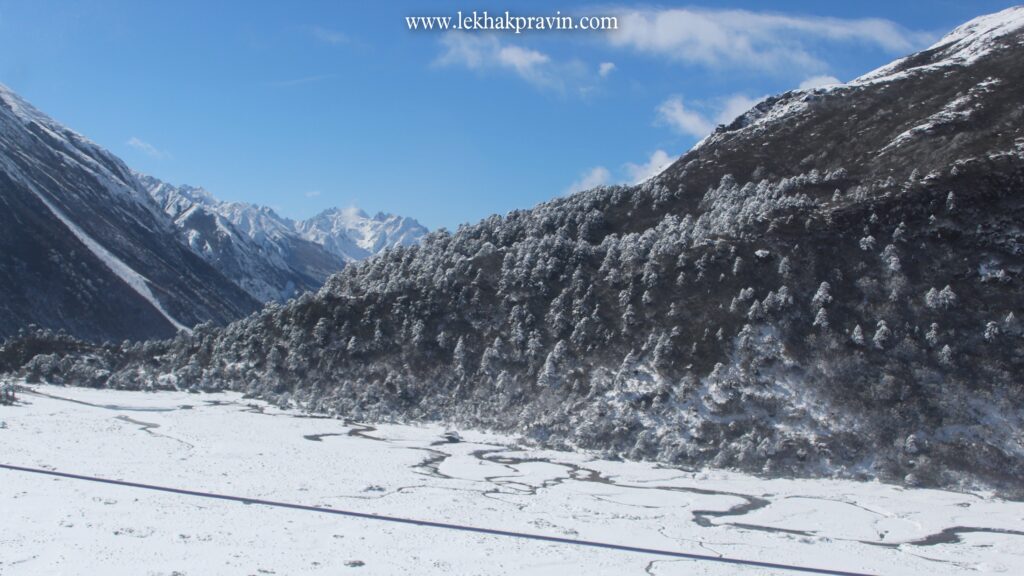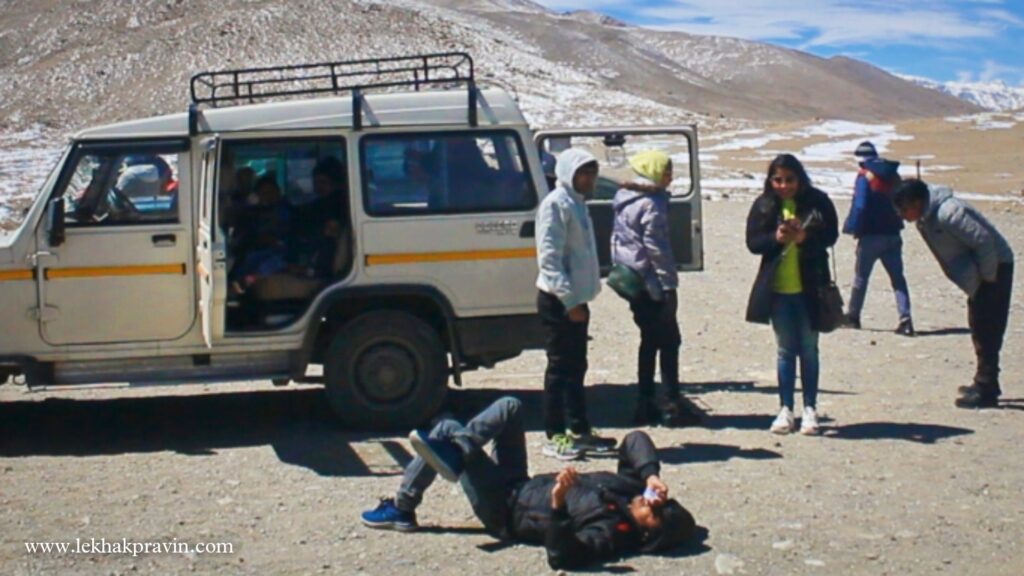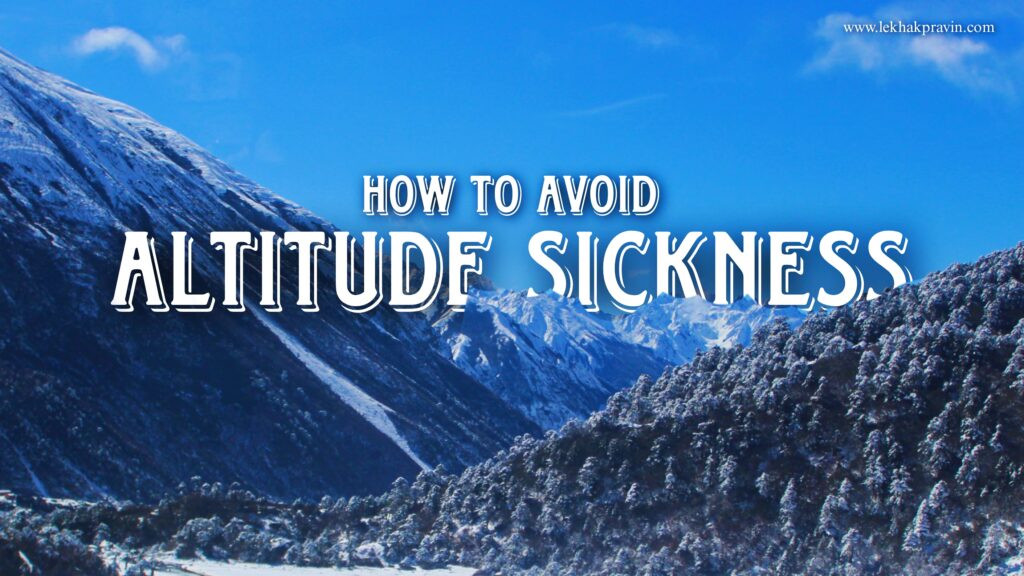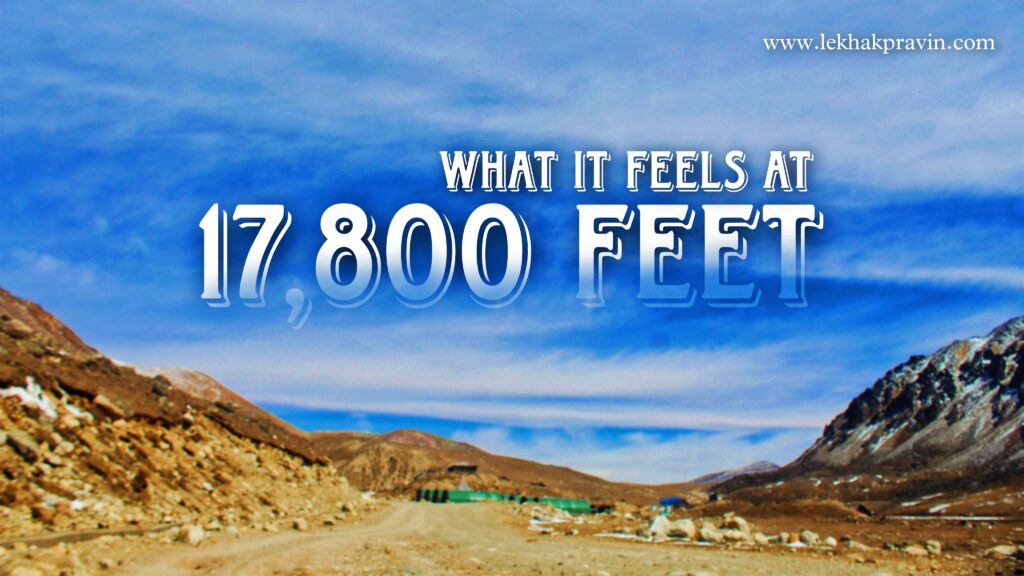Mountains are a traveler’s paradise, but every beauty comes with a cost. Mountain Sickness or Altitude Sickness or Acute Mountain Sickness (AMS) are very common among the travelers who love to travel to higher altitudes, but are careless enough to neglect their health. In this blog we are going to talk about what is altitude sickness and how to avoid Mountain Sickness or AMS. We will also learn about the best ways to stay fit in mountains.
One needs to have a basic or good knowledge about high altitude sickness and acute mountain sickness to lower your risk of getting affected with AMS on the higher terrains like Sikkim, Ladakh or other northern places in India. I’ve mentioned AMS in one of my blogs where I talked about how it feels like at Umling La Pass which is the world’s highest motorable road.
To safeguard yourself from Acute mountain sickness it is extremely important to take proper acclimatization and rest days at certain specific locations after you surpass a certain height. No kind of uneasiness should be taken lightly at such high altitudes. If any such symptoms show, one should instantly begin with the curative measures.
What is Altitude Sickness?
According to Cleveland Clinic, “Altitude sickness is when your body doesn’t have time to adjust to lower oxygen availability higher up in the atmosphere. It’s usually preventable and treatable. When severe, it can rapidly turn into a life-threatening concern. Recognizing the symptoms early is key to pausing your ascent, which can head off complications or worsening symptoms.”
Precautions To Take When Symptoms of AMS Show Up
- Check Oxygen level
- Take Diamox
- Consume As Much Liquid As Possible
- Stop Trekking Further If Symptoms Do Not Fade
- Carry Oximeter, Thermometer, and Oxygen Cylinders
Symptoms of Mountain Sickness:
According to Wikipedia, “the symptoms of mountain sickness may include headaches, vomiting, tiredness, confusion, trouble sleeping, and dizziness.[1] Acute mountain sickness can progress to high-altitude pulmonary edema (HAPE) with associated shortness of breath or high-altitude cerebral edema (HACE) with associated confusion. Chronic mountain sickness may occur after long-term exposure to high altitude.” Mountain Sickness or Altitude Sickness is no joke and must be treated with immense importance to avoid any big problem in the future.
Preventive Measures and Tips to Avoid Altitude Illness
- Drink lots of water: As mentioned earlier, staying hydrated is the best way to keep your body healthy and fit at higher altitude and avoid Mountain Sickness. It is prescribed generally that the water intake has to be at least 3 times more than what one person usually takes normally.
- Ascend Slowly and Gradually: Do not rush to reach the top. Every person is built differently and thus, it is important that one ascends and scales at their own suitable paces and not rush to the top without exertion. In a research study it was found out that one should not gain more than 500 m (1640 ft) per day as it increases the chances of AMS. Avoid traveling directly to a higher elevation and give your body time to adjust to the lower oxygen levels and let it adapt to the climate and the temperature at the height at which you are. After every 3,300 feet of escalation, try to spend an extra day at that elevation without ascending further to properly acclimatize to the surroundings.

- Sleep at lower altitudes: For proper acclimatization, it is recommended to trek at a higher altitude and sleep at a lower altitude. So it is advised to start early and trek through the day and then descend before nightfall.
This reduces risks of AMS and gives your body time to acclimatize and adapt to the natural habitat of the higher regions.
- Rest between walks: It is very important for you to take a short and meaningful break between walks and maintain your breath. Maintaining a normal breathing rhythm is very important when traveling at higher altitudes. Owing to the low levels of oxygen you should always save your breath.
- Proper Diet: Taking hygienic high carbohydrate and protein rich food is essential during the trek. You always need that energy to keep you going through the trek. Avoid consuming junk food and food that makes you drowsy because a good long-lasting energy food is important for your trek.
- Say No to Alcohol and Smoking: Consumption of Alcohol and smoking have a severe negative impact on health at high altitudes and no matter how easily everything is available there, it can contribute to the chances of you getting altitude sickness. So you should and you must avoid consumption of any kind of alcohol in the first few days of your trip.
- Minimum Exposure to Cold: One should avoid exposure to cold at higher altitudes and try to be properly covered throughout the trek to avoid frost bites or catching cold. One should avoid cold beverages and cold water at such high temperatures and should keep consuming boiled water instead of normal water. Also, hydration is quite important. So one should include liquid food more and more in their diet like soups and local dishes.
If the itinerary does not allow for gradual travel to a higher elevation, try consulting your doctor about the medicines you can use to prevent or treat altitude illness. Many high-elevation destinations are remote and access to any sort of medical care may be difficult. Diamox is the most used medicine for AMS.
Altitude Illness and How To Avoid Mountain Sickness
Acute mountain sickness (AMS) is the mildest form of altitude illness.
Symptoms Of AMS:
- Headache
- Tiredness
- Lack of appetite
- Nausea
- Vomiting
- Children who cannot yet talk may just seem fussy

Mild cases can be treated by easing symptoms, for example using pain relievers for a headache and paracetamol for basic symptoms of fever. Symptoms should go away on their own within a couple days.
People with altitude sickness should avoid traveling to higher elevations as long as they show symptoms of uneasiness. A person whose symptoms get worse while resting should immediately travel to a lower elevation or must be taken back to avoid serious illness or worse, death.
High-altitude cerebral edema (HACE) is a more serious form of AMS.
Symptoms of High-Altitude Cerebral Edema (HACE)
- Extreme fatigue and Tiredness
- Drowsiness and Fainting
- Confusion and Loss of Ability to think
- Loss of coordination of the Muscles
High-altitude cerebral edema is rare, but it is so serious that it can even cause death. If it develops, the person must immediately move, or be moved, to a lower elevation.
A third type of altitude illness is called high-altitude pulmonary edema (HAPE). It can quickly become life-threatening.
Symptoms of High-Altitude Pulmonary Edema (HAPE)
- Shortness of breath
- Weakness
- Cough and Cold
- Temperature Rising
- Pulse drops
A person who shows such symptoms must immediately be taken to a lower elevation and treated with an ample amount of oxygen. This is a serious issue and should not be neglected.

People With Pre Existing Medical Conditions
The people diagnosed with pre-existing medical conditions should consult with their doctor before traveling to high elevation places.
- People with heart or lung disease should pay attention to have themselves properly checked and consulted before traveling to higher locations.
- People with illnesses like sickle cell anemia, severe pulmonary hypertension, etc., should not travel to high elevations under any given circumstances.
- Pregnant women can make short escalations but they should consult their doctors first. Pregnant women are advised not to sleep at elevations above 10,000 feet.
- People with diabetes need to be aware that diabetes becomes difficult to manage at higher elevations.
Note from the Author:
Hey there, welcome home travelers. I am Lekhak Pravin, a writer, traveler, lyricist, filmmaker and content creator. I hope my blog was able to fulfill your needs and you enjoyed reading it through. If you enjoyed yourself here, I hope you read some of my other blogs too, and keep traveling. This website is my attempt to take you to corners of the world and beyond as I explore them. My experiences are available on this site of mine, because, “Experiences are Eternal!”
Happy Travels!
[/et_pb_text][/et_pb_column]
[/et_pb_row]
[/et_pb_section]




